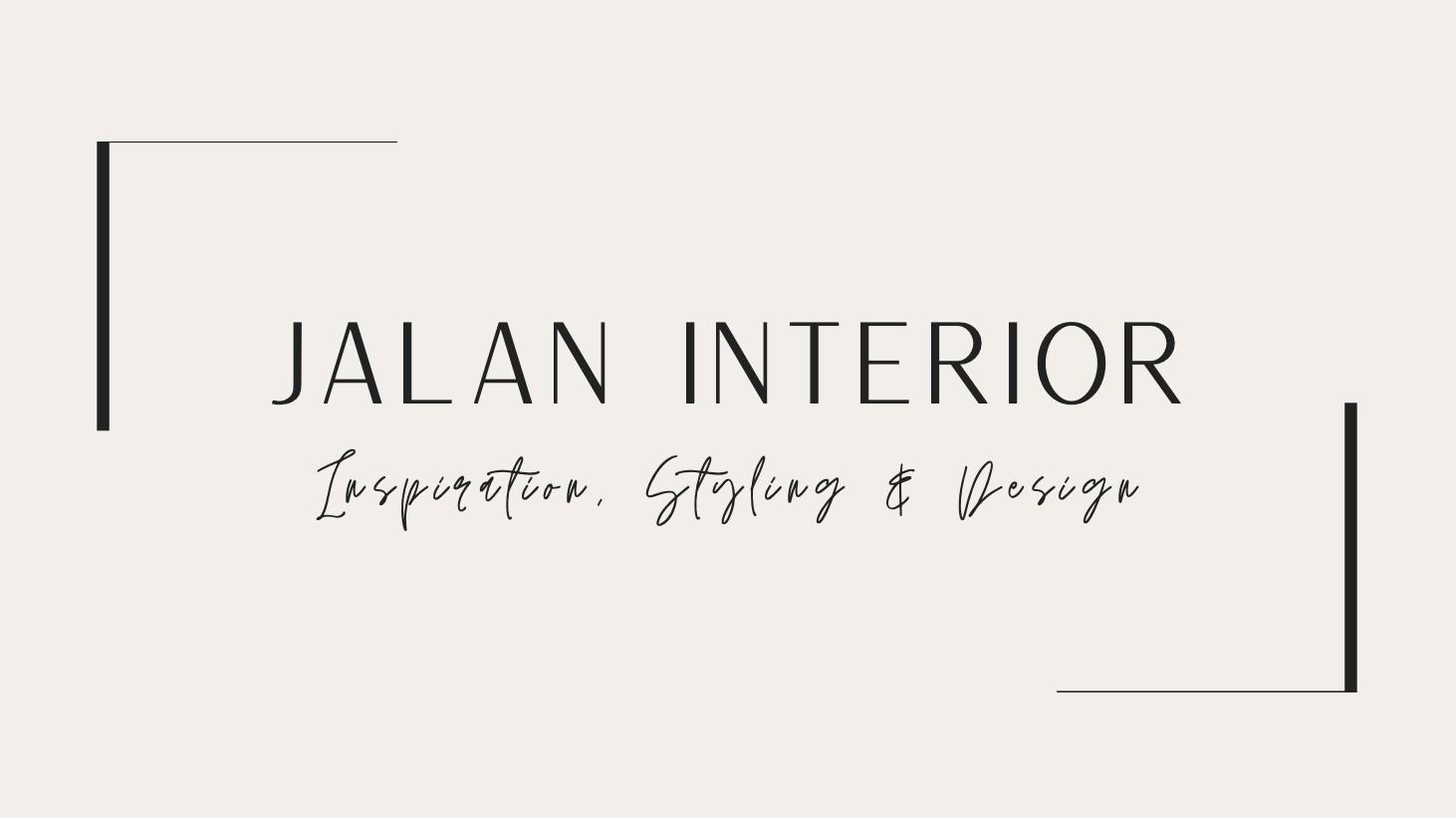
3. Louis XIV Baroque 1643 - 1715
11. Louis XV Rococo 1715 - 1774 18. Herculaneum & Pompeii 20. Louis XVI French Neoclassical 1774 - 1792 28. Empire Style 1804 – 1830 36. Bibliography
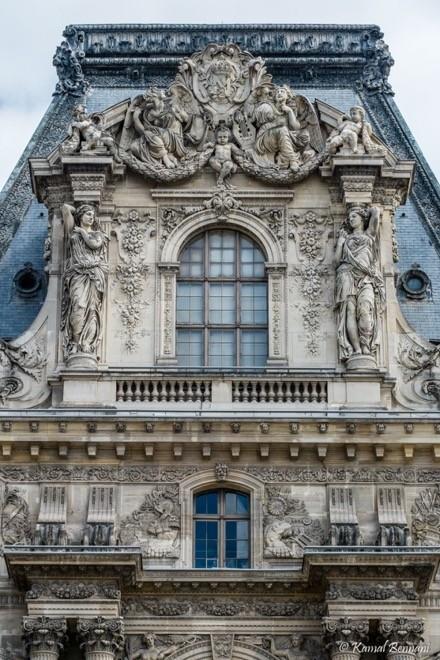


3. Louis XIV Baroque 1643 - 1715
11. Louis XV Rococo 1715 - 1774 18. Herculaneum & Pompeii 20. Louis XVI French Neoclassical 1774 - 1792 28. Empire Style 1804 – 1830 36. Bibliography

A time characterised by the accumulative power and authority of France within European politics, Louis XIV is infamous for guiding in an era of extreme opulence and an arrangement of investment and authoritarianism. After the death of his father King Louis XIII (1601 – 1643) when he was only 4 years of, his mother Anne of Austria (1601 – 1666) became regent of France, and with the aid of the chief minister and her confidant Cardinal Jules Mazarin, she took steps to strengthen and bolster the monarchy’s command. This brought about disgruntlement and anger amongst nobles and aristocracy which developed into civil war, with Anne and Mazarin being chased out of Paris. The effects and repercussions of these actions and the treatment of his mother and godfather stayed with Louis XIV, so much so that it greatly impacted his politics and reign as monarch in later years.
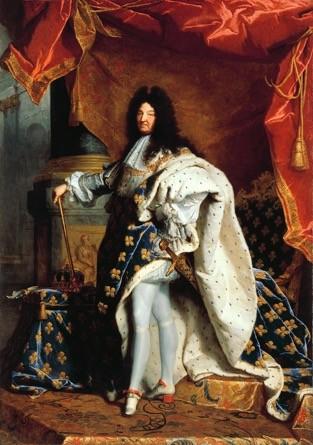
During his sovereignty Louis XIV constricted control of France and aim to centralise the country. He believed greatly in the Theory of Divine Rights of Kings meaning the monarch was to have undisputed jurisdiction and influence of the state. He disempowered unruly nobles which in turn resulted in 11 civil wars. Louis XIV instituted France as a prevailing country in Europe with unbounded authority. He did this by growing and strengthening the armed forces, as well as lessening deficit and encouraged progression within the country’s economy. All of these actions meant France was seen as a danger to other European countries and subsequently during Louis XIV’s time as monarch there were destructive wars such as the War of Devolution with the Spanish Netherlands (1667 – 1668), the Franco Dutch War (1672 – 1678), the Grand Alliance (1688 – 1697) and the War of Spanish Succession (1701 – 1714).
Louis XIV seemingly always conducted himself contrarily than that of his predecessors, for example after Mazarin's death he declared he would rule without a chief minster, a extraordinary amendment to tradition. Instead he saw himself as a ’direct representative of god’ and most famously was quoted as claiming “I am the sate”. There was unlimited ego and self confidence in the way he ruled.
• Louis XIV
• Salomon de Brosse
• Francois Mansart
• Louis Le Vau
• Charles Le Brun
• Andre Le Notre
• Francois D’Orbay
• André-Charles Boulle
• Jules Hardouin-Mansart
The prevailing style during Louis XIV’s time as king was Italian Baroque, a design ethos based on painted forms, magnificence and luxury. The unfussiness and uniformity of previous eras matured into more multifaceted architectural details and there was an emphasis of naturalistic origins such as leaves, shells and scrolls. This is seen at the Louvre in Paris designed by key Baroque artists Charles Le Brun and Louis Le Vau (title page). During the reign of Louis XIV this developed into what is known as French Baroque style where there was importance on symmetry and order, the inclusion of colonnades (a long sequence of columns) and cupolas (domes). All of these components were intended to suggest the supremacy of France and King Louis. Another transformation during this design period was the seamless linkage between architecture, interiors and the surrounding gardens. Artists and architects would assimilate the design of building with the garden, best appreciated at the palace of Versailles (below right).
French Baroque architecture was also known as French Classicism and a crucial example of this style is seen in the Chateau of Vaux le Vicomte, built between 1656 – 1661. Nicolas Fouquet, the superintendent of finances for Louis XIV wanted to design a new estate motivated by Versailles, using the same designers Charles Le Brun for the painting and decorating, Louis Le Vau for the architecture and Andre Le Notre for the gardens. Quintessential elements of Baroque included the central dome, notable painted ceilings, interconnected rooms and methodically ordered columns. Again, this building was meant to convey the command and control of its owner, a style rooted in audaciousness.
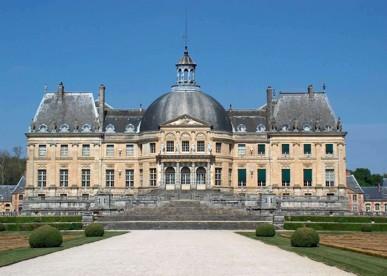
Louis XIV asserted the sun emblem as his own and subsequently he was known as the ‘Sun King’. This symbol is seen in through Versailles, which also demonstrates key architectural features of French Baroque style such as the flat roof with a grand terrace, balustrades, pilasters and symbolic sculptures.


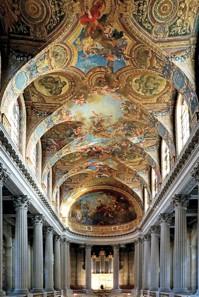
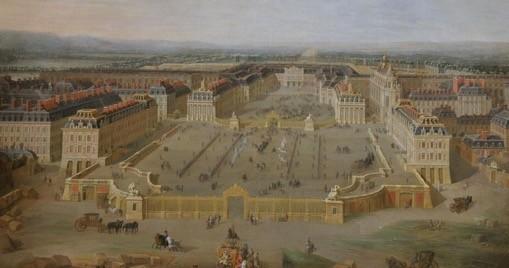
Known as the defining symbol of power in Europe at the time, Versailles has become infamous for is extravagant and extreme design, pointedly influencing culture in France and across Europe. Versailles has became synonymous with Louis XIV’s reign – it was a rousing and inspirational status to his time as monarch and embodies his ego, character and prestige as a momentous king. Versailles originally began as a royal hunting lodge, but after the war of Fronde, Louis XIV was determined to not endure what his mother had with nobles chasing them out of Paris, instead he began working on creating one of the largest palaces In the world that he could govern from. Soliciting the service of vital designers of the time (Charles le Brun, Andre Le Notre, Louis Le Vau and Andre, Charles Boulle, Jules Hardouin Mansard) Versailles showcases Baroque style at its finest. Louis XIV used Versailles to control politics with the court and government transporting to the palace. He managed everything in the open, meaning he had complete rule and could observe those he felt would scheme against him. It became the figurative backdrop to his absolutist regime and ensured nobles and aristocracy could not revolt. Politics and power are at the centre of many design features at Versailles that were meant to overpower and intimidate foreign dignitaries as well as members of his own government. Examples include the inclusion of Le Brun paintings and illustrations of Louis XIV through the years and his victories as monarch. The fountain in the gardens include Louis XIV at the centre, symbolising him as the life source and hub of the universe. All these touches meant Versailles was seen as an indication of his supremacy.

The Hall of mirrors (right) is one of the most famous rooms in the palace, designed by Jules Hardouin Mansard, this long hall overlooks the symmetrical and orderly gardens, which in turn are reflected in the many mirrors that run along the opposite wall. Various decadent materials are seen in the space including rich coloured marble, bronze, stone, and gilded stucco and plasterwork. These material became symbolic of baroque style, ultimate decadence and opulence with no expense spared. The barrel vaulted ceiling is painted in amber and gold, depicting scenes celebrating the early years of Louis XIV.
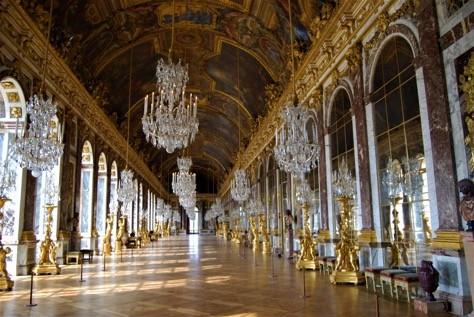
The staircase at Versailles (below right) was decorated in marble, gilt bronze and intricately detailed paintings designed by Louis Le Vau and built by Francois D’Orbay and Charles Le Brun. Known as the ‘Ambassadors Staircase’ the images and illustrations show the victory of Louis XIV during the France Dutch War. A grand statement of power and heroism on a large scale, another element of Baroque style that is rooted in dominance, extravagance and status.

Due to his appreciation and love for the arts Louis XIV guided in a phase of excellence in literature, music, theatre and art, making sure he encircled himself with the most imaginative and esteemed artists such as the playwright Molière, the painter Charles Le Brun and the composer Jean- Baptiste Lully. This was subsequently represented in the grand and decadent interiors through the Baroque style period. Luxurious materials, grand staircases, oval rooms and complex décor details all represented this style and were seen in abundance during this period. There was an emphasis on sculptural forms and painted figures depicting stores, landscapes and naturalist elements. Stylised columns surrounding by magnificent paintings that covered entire ceilings, a regal and royal atmosphere was fashioned throughout all these design features that feel prosperous, multifarious and lavish.
Furniture – Chairs were rigid, rectangular and high back with straight scrolled arms and legs. Gilded x framed stools. Gilded bronze and silver furniture. Large scale and heavy structure of furniture such as door front cabinets ‘armoires’ and high storage units on tall legs ‘commodes’. Rich ornamentation on cabinets, tables etc. Mostly oak and walnut used with decorative trims in more unique and unusual woods (tulip, zebra wood). Marquetry of tortoiseshell, ebony and brass.
Floors – Marble, stone and parquet in geometric patterns. Aubusson and Savonnerie carpets.
Lighting – Chandeliers, scones, candle stands and candelabras.
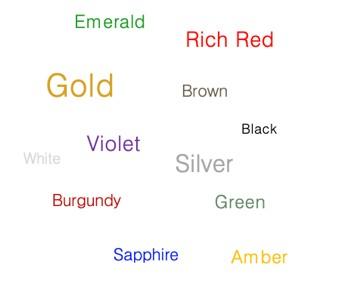
Walls – Marble, painted and paneling. Statues and columns along walls. Elaborately painted ceilings.
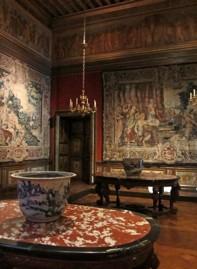


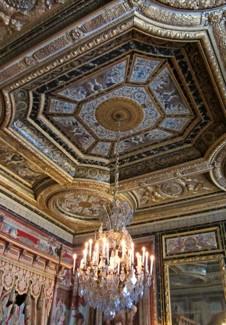
Doors – exterior inspired by classicism with columns and pediments. Interior doors paneled.
Windows – Long casement and sash windows.
Fabrics – Upholstered furniture in the finest fabrics. Drapery. Goblin tapestries woven to cover walls. Velvet, damasks and silk curtains depending on the season.
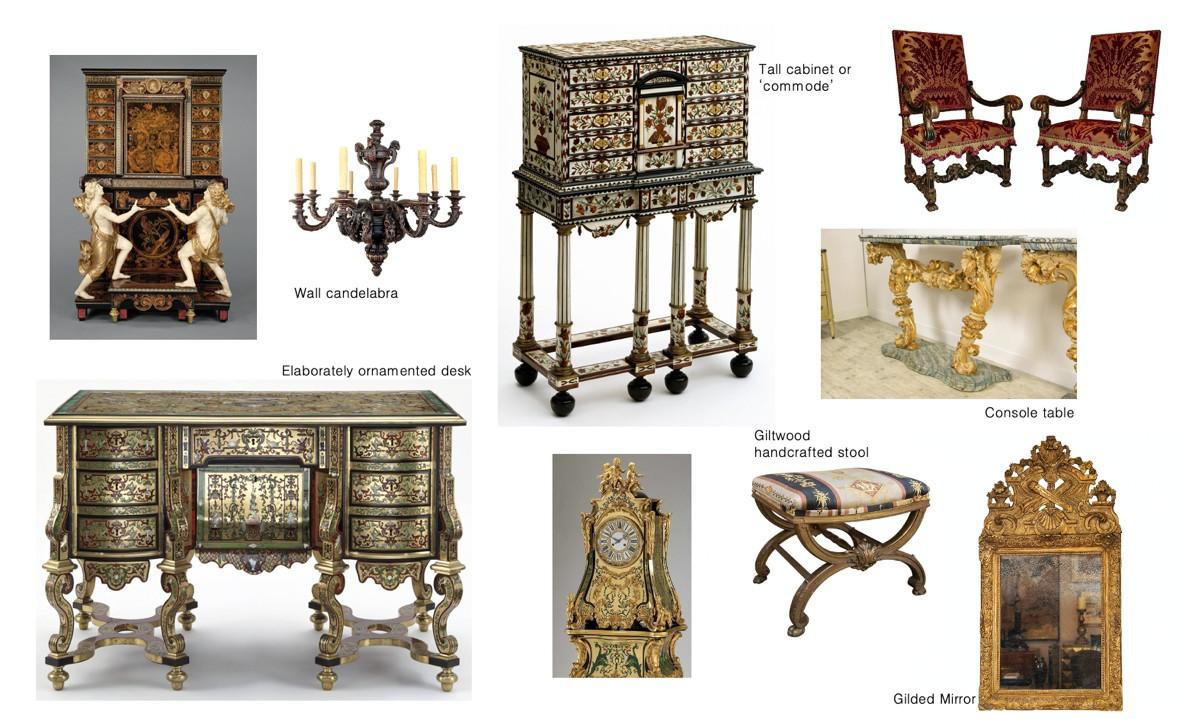
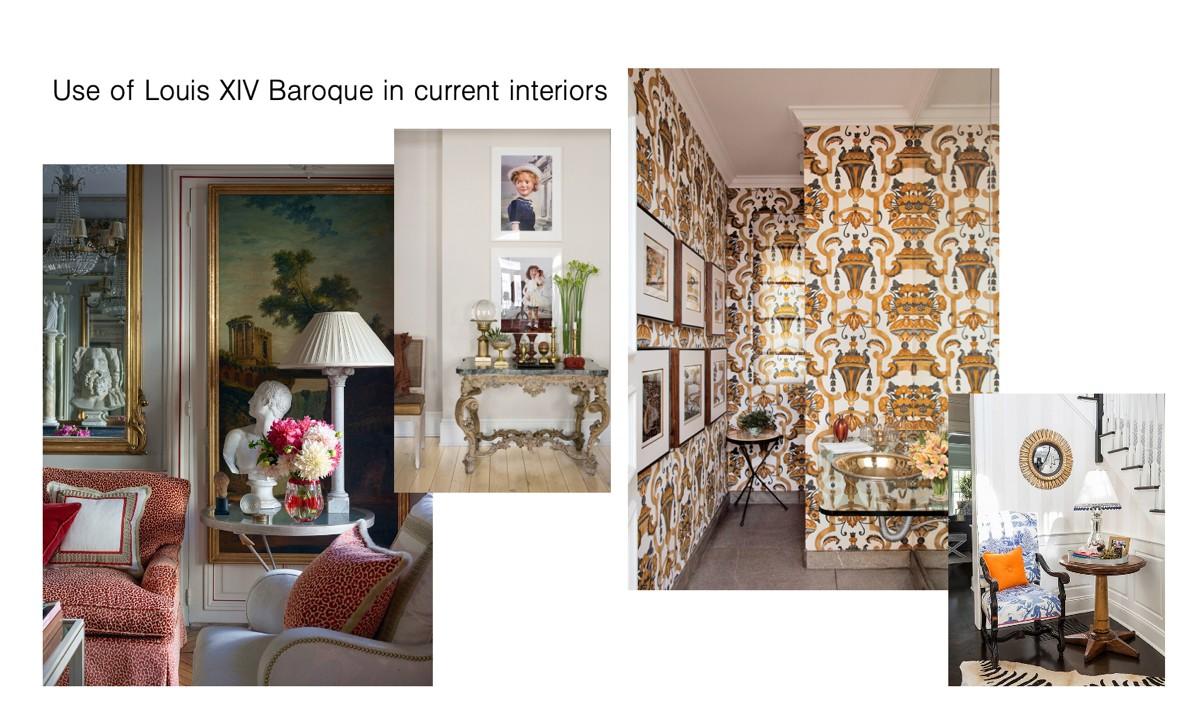

King Louis XV died in 1715 when his successor and son Louis XV was only 5 years old, and throughout the years that followed there was a temporary period known as the Regency. During this time Philip, Duke of Orleans governed France until 1723 when Louis XV officially befitted as monarch. This era was reflected upon as the ‘age of reason’ with democracy ruling and nobles and political figures in court and government slowly gaining back the power they had lost under the rule of Louis XIV. A major measure of this was the government relocating back to Paris from Versailles.
Louis XV’s time as king was overshadowed by warfare and the decreasing status of France within Europe (1733 – War of Polish Succession, 1740 – War of Austrian Succession, 1756 - Seven Years War).
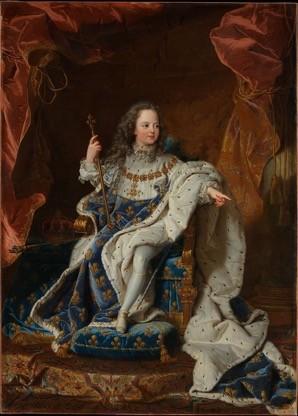
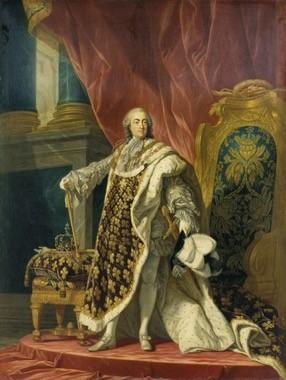
It is claimed that Louis XV lacked any interest in governing the country and lacked self confidence, segregating himself, instead preferring to spend time in the company of multiple mistresses. Criticised for many diplomatic and economic unsuccess's and instabilities during his reign, Louis XV had a damaging reputation which was made worse by the multiple wars and defeats borne as well as significant expenses that left the monarchy and government enfeebled.
• Louis XIV
• Madame de Pompadour
• Juste-Aurèle Meissonier
• François de Cuvilliés
• Gabriel Germain Boffrand
• Ange Jacques Gabriel
• Richard Mique
• Charles Cressent
• Nicholas Pineau
• Andre Charles Boulle
• Charles Joseph Natoire
French Rococo rotated around lighter, elaborate and elusive interiors and furnishings in comparison to the Baroque style that preceded it. The main difference was an introduction of far more fluid, curvaceous shapes and forms. Colours continued to be rich, but there was also a great use of softer pastel shades and tones. Gold continued to appear quite heavily and teamed with white walls and floral imagery it feel graceful, airy and charming.

The layout and purpose of specific rooms in the house developed to include various tasks or social gatherings, such as the inclusion of a salon, music rooms or a reading room. Each space had a exclusive character within its purpose and style.

Chantilly was a noteworthy building and interior during the French Rococo era, the basic components of fluid shapes, delicate detail, gold and white colouring and intricately painted scenes all participate in this space. For example the highly unique murals along the walls by Christophe Huet, showcased monkeys performing human actions (far right). This humour, distinctiveness and complex detail are central exemplars of French Rococo style.

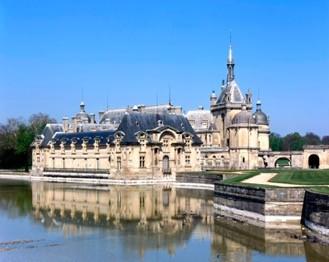
With regards to architecture there are very little instances of French Rococo, instead the style moved from reserved and classic Baroque to Neoclassical in the late 17th century. However there are some cases that communicated the delicate yet exuberant tone of French Rococo. The Petit Trianon was a miniature palace in the grounds of Versailles and was designed by Ange Jacques Gabriel between 1762 –1768. Built as an escape from the showiness and flamboyance of Versailles, this building exhibited essential French Rococo fundamentals including the Corinthian columns, fancy detailing, cream and white colouring and the impressive staircase. There was a combination of slight detailing yet unassuming embellishment, with modest mirrors above mantels and fireplaces and wood panelled walls painted in pale colours.

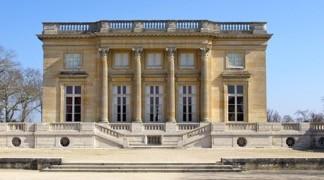


Housing designs were far more discreet and limited and with military defeats during this period resulting in financial constraints, royal projects became much smaller and restrained. Homes for common folk were also smaller in scale and architects were able to design supplementary rooms in one home. Buildings were mostly rectangular with an emphasis on horizontal and vertical lines, seen at Hotel Soubise (right). Roofs were flat and simplistic, this was known as the Mansard roof after Francois Mansard who developed this style with steep sloped edges and dormer windows. In contrast to the rectangular exterior, the interiors often leant towards a frivolous and delicate style focused on curves and fluid lines.
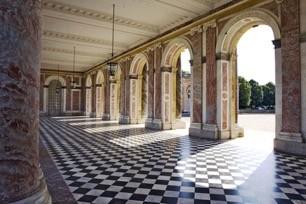 Ange Jacques Gabriel
The Petit Trianon
Ange Jacques Gabriel
The Petit Trianon
During this period there was a growth of middle class society, known as the ‘bourgeoise’. It was not only the upper classes and aristocracy that appreciated and were patrons of arts and high culture. Social gatherings became a common occurrence for many folk not just the higher class, and subsequently furnishings had to be practical for this activity. There was a focus on relaxation and handiness, with lighter and reduced pieces of furniture, chairs with comfortable cushions and fabrics.

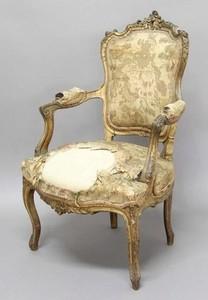
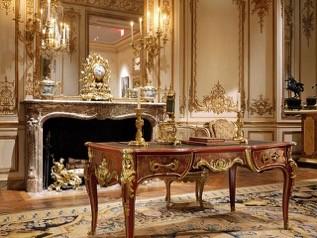

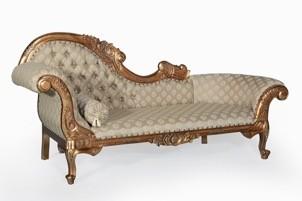
Fauteuil – armchair with an open gap between he seat, back and arms
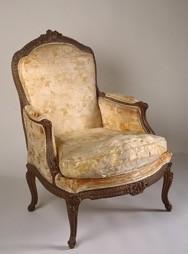
Bergere – a larger, sometimes lower, more comfortable char with padded arms
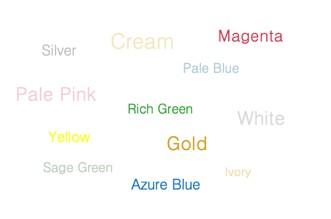 Chaise Longue – an extended seat
Chaise Longue – an extended seat
Furniture – Lighter, movable items. Elaborate curves and scrolls. Accessories such as clocks, picture frames, mirrors, mantel pieces, candlesticks. Marquetry furniture. Wood preferencebeech, walnut, mahogany, lime and cherry wood. Curved furniture, the introduction of the s- curved cabriole leg, comfortable seating with upholstery and cushions, padded arms on chairs. Storage furniture featured drop leaf carving, roll top desks. Twisted shaped ormolu (handles).
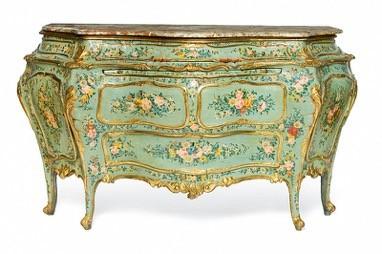
Floors – Wood parquet, Aubusson carpets.

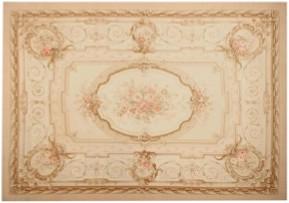
Lighting – Wall bracket candle holders, chandeliers, candelabras, wall scones.


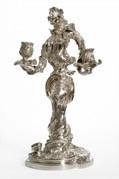

Walls – Oval shaped rooms. Painted wallpaper from China and India. Delicate cornicing, plain ceilings. Stucco and tiles as well as wood paneling.
Doors – Paneled with gold and white details.
Windows – Long casement windows, simple treatments, dress curtains in velvet, silk and damask. Wavy glazing bars and shutters with mirror glasses.
Fabrics – Silk was most common, with linen and printed cottons as well.

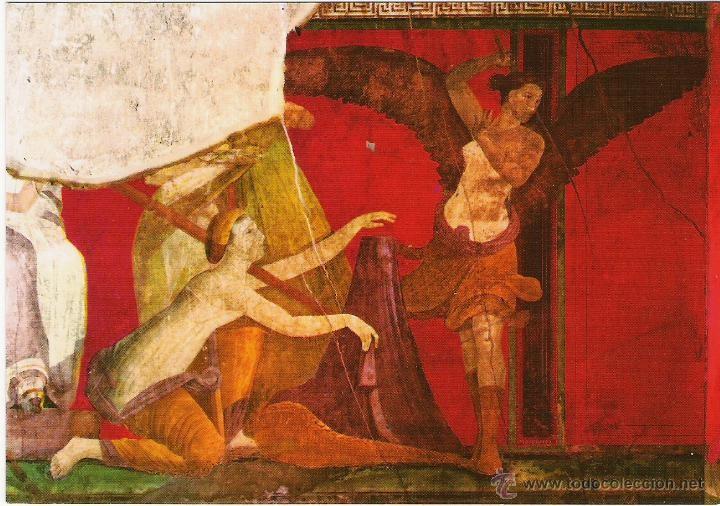
The excavations of ancient Italian towns, Herculaneum and Pompeii, had a profound effect on architecture, design and the decorative arts around Europe. After the volcanic eruption of Vesuvius in 79 AD, these towns were covered in ash but miraculously perfectly preserved. Pompeii was officially discovered in 1738, where ancient treasures and artefacts such as furniture, wall paintings (below right), pottery and other home accessories were unearthed. At the time archaeology was not yet a profession, and the excavations generated enthralment in ancient worlds and classical arts. There was a introduction of an innovative subject ‘art history’ and both Pompeii and Heracleum became must see visits on the Grand Tour. The volcanic ash preserved and maintained almost everything, including buildings, furnishings, sculptures and dead bodies (far right). In Pompeii there the finding of intricate mosaics, civic buildings, monuments and a gymnasium, whilst at Herculean a brothel, public bath and amphitheatre was revealed (middle right). These were large scale excavations with a purpose of preserving and collecting works of ancient art that promoted the cultural, social and political wealth of nearby city Naples at the time. Italy fast became a hub of arts and antiquity. The inspiration of these ancient towns spread to architecture, furniture making and art work as well as interiors, seen in design elements such as motifs, stucco work and frescoed walls.

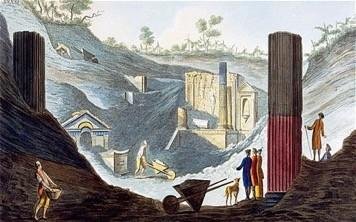

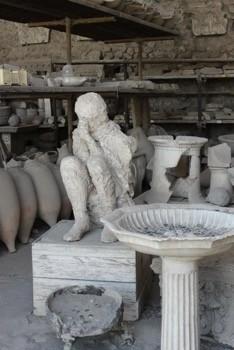
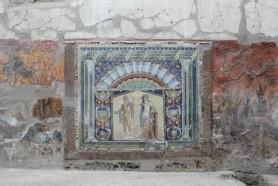

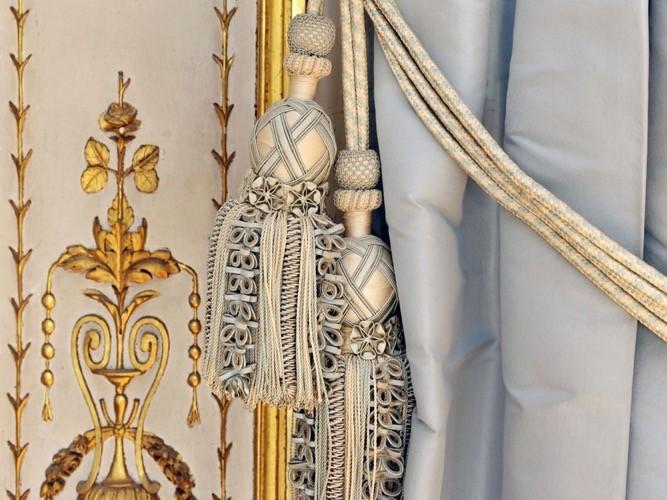
The last king of France afore the French Revolution, Louis XVI tackled disgruntlement and dissatisfaction as well as a vastly growing resentment towards the monarchy. During his reign, Louis XVI was considered to be ill equipped to deal with political and foreign policies, described as uncommunicative and sombre. As the country's debt was rising and France was left in a grave financial condition, Louis XVI presented no power or decisiveness to better the situation instead he failed to address serious fiscal policy tribulations. After years of not raising taxes or accepting international loans the country was nearly bankrupt and in 1789 in a late attempt to rectify this Louis XVI summoned a form of parliament called ‘estate-general’. An estate made up of clergy, nobles and common folk were produced, however they proclaimed themselves as a national assembly and set out to develop a constitution whereby they had the right to represent the nation. These were the beginnings of the French Revolution and after the royal family made an attempt to escape the country in 1791 this was seen as proof of treason. The monarchy was abolished in 1792 and France was declared a republic, both Louis XVI and his wife Marie Antoinette were executed for treason in 1793.
• Louis XVI
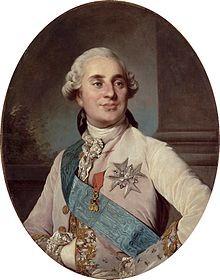
• Marie Antoinette
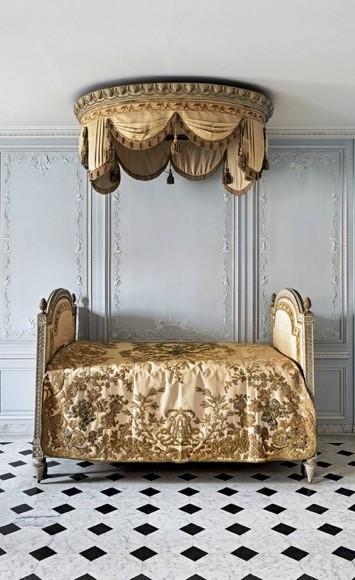
• Charles de Wailly
• Victor Louis
• Marie-Joseph Peyre
• François-Joseph Bélanger
• Pierre Rousseau
• Georges Jacobs
• Jean Henri Riesener
• David Roentgen
• Jules Hardouin-Mansart
• Richard Miquel
• Jules Antoine Lissajous
• Jean-Baptiste-Siméon Chardin
French Neoclassical architecture was a consequence to the extravagant and intricate ornamentation of the Baroque period, instead buildings were designed around the notion of order, symmetry and clean lines. The discovery of ancient Roman and Greek artwork, sculptures and crucially architecture heavily inspired Neoclassical architecture with an emphasis and idealisation of nature. The excavations of Herculaneum in 1738 and Pompeii in 1748 insured a wave of designs, architecture and décor. These seemingly wealthy towns that had been buried in ash after the volcanic eruption in 79AD had been preserved and remained mostly intact, enthusing an era of style based on classical civilizations. Carvings and friezes that adorned buildings depicted figures and forms, such as the orthodox rudiments of Ancient Greece and Rome. French Neoclassical style focused on a sense of unpretentiousness and intimacy, with simplicity and grace in the carvings, columns and friezes. Motifs included naturalistic themes such as florals, acanthus leaves and garlands as well as human figures.
The layout of buildings and homes were more modest and restrained with rooms smaller and a feeling of seclusion and comfort. Large townhouses were substituted for smaller rustic sanctuaries, and specific rooms were designed for various purposes and ceremonies such as music rooms, comfortable social salons etc. Examples of this are seen in the Chateau de Bagatelle designed by Francois Joseph Belanger in 1777, as well as the Carnavalet, now a museum but previously a hotel, designed by Francois Mansart in 1655. Reduced scale architecture is also apparent in Place Vendome in Paris, originally called Place Louis le Grand in honour of Louis XVI and later renamed after the revolution to Place des Piques. Discreet sized apartments, unassuming lines and informality within ornamentation and detail make all these examples clear indicators of French Neoclassical style.

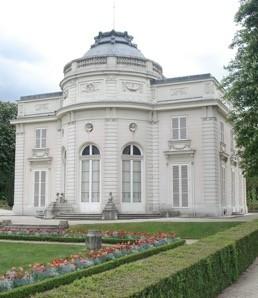
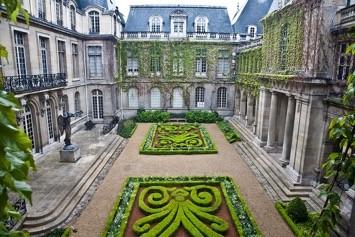
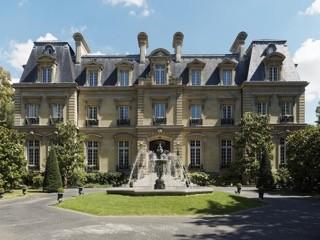 Chateau de Bagatelle
Place Vendome
Chateau de Bagatelle
Place Vendome
The impact that the Queen of France had on decorative arts was significant and it ushered in a ‘golden age’ of French art and design during the Neoclassical period. Originally from Austria Marie became Queen at the young age of 19 and was infamous during her time in the monarchy for lavish spending, frivolous extravagance and overdone social parties. She rebuffed the traditional roles of the royal family and instead engrossed herself in having a life dedicated to fashion, luxury and excess. All of this during a period of social unrest and financial debt within France meant that the Queen was highly unpopular with the French people and public option of her was frequently hostile. However the significance she played within creative design is uncompromising and you only have to look at the interiors of places such as Versailles and Fontainebleau to understand the sophistication, imagination and splendour she encouraged. During her reign as Queen, social customs and fashions were shifting, including the altering of dresses and skirts which were wider with a frame underneath the fabric to hold it in place. This meant seating needed to accommodate these fashions, such as lower more comfortable chairs, small sofas or a chaise lounge. Interiors and furnishings in general became more informal, comfortable yet did not wavier in style and refinement. Themes of nature and florals appeared within wallpapers and fabric patters, such as ivy and jasmine garlands and the colours were pale pastels in greens, blues and pinks. There was a unique feminine hint to the interiors that Marie would inspire and were reflective of the French Neoclassical era. Individual rooms would each have their own character and style, for example within Chateau de Fontainebleau there was Turkish inspired salon, an Arabic themed bedroom and a playful games room. Themes would motivate the décor of an interior and the colour scheme would often concentrate on two main tones.

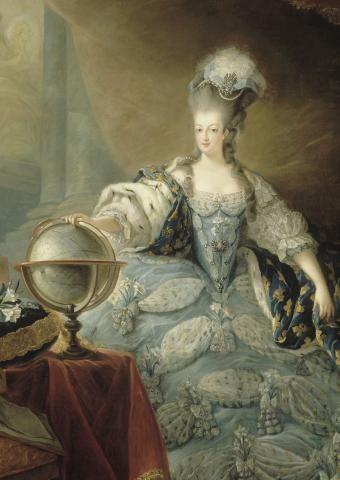

Another trend of the era exhibited by Marie Antoinette was very tall and white powered hair styles. In order to have her hair shaped in this fashion she would have to sit for long periods of time and turn as each side was styled. This inspired the swivel chair (right) which meant she could sit comfortably whilst her hair was attended to.
Marie Antoinette interiors included floral marquetery, decorative panelling and beautiful ceiling paintings enthused and employed by artists such as Jean-Henri Riesener, François Boucher and Jules Antoine Lissajous. Georges Jacobs was a cabinet maker that crafted beds, chairs and sofas for the royal family including carved, panelled, upholstered and gilded furnishings.
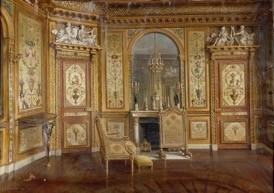
There was a characteristically ‘Sophisticated French’ look we have come to know as Marie Antoinette style that enhanced a sense of elegance, regel beauty and femininity during a period of turbulence and political and social turmoil within the nation. Furniture highlighted classical elements such as friezes, pilasters and pediments. Indulgence and grace was manifested amid opulent interiors, furnishings and even accessories such as this velvet dog kennel (right) the ultimate luxurious and lavish item.
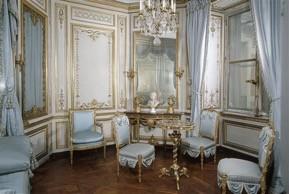


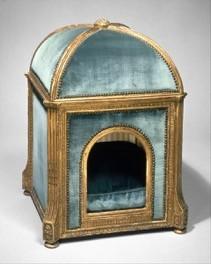
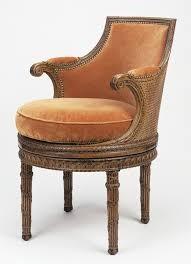


A move away from the curves and intricate imagery of Rococo, instead French Neoclassical concentrated on rectilinear and geometric lines and shapes. Still forms, right angles and straight lines were noteworthy. Motifs encompassed naturalistic themes and in later years motifs would make reference to the revolution with swords and spears, clasped hands and the French flag. Inspired by the formality and dignity of ancient Rome and Greece, classical elements made their way into interiors and furniture design. Carved friezes and classic columns were unfussy yet graceful and this style was also apparent in furniture design with chair legs straighter and fluted along with rigid backs to chairs. Relaxation and intimacy were crucial within the decorative arts. The wood used was mostly mahogany, either carved or gilded and fabrics were comforting, such as canopies over beds and tasteful window dressings.
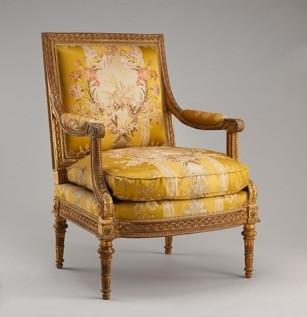




Furniture – Chairs with straight legs and rigid square or oval backs. Swivel chair. Small sofas. Rectangle friezes in bronze on furniture, stucco and marble. Oak, walnut and mahogany wood. Round tables.
Motifs – Floral garlands, ribbons, vines, swords, spears, French Tricolour and clasped hands.
Floors – Parquet flooring in pretty patterns. Aubusson carpets.
Lighting – Oil lamps, Chandeliers, wall scones and candelabras.
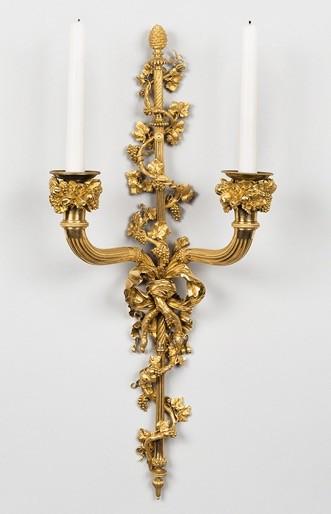
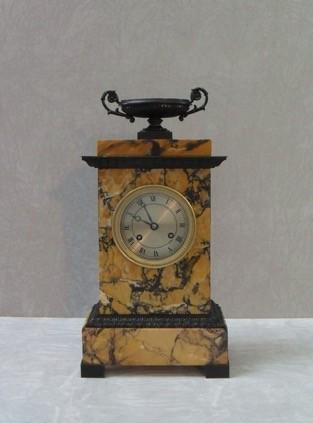
Walls – Decorative and framed paneling. Ceilings painted to resemble sky and clouds. Rooms painted in two main colors.
Doors – Elaborate carved and paneled doors. Classical inspired architraves and panels.
Windows – Long casement windows with straight glazing bars. Curtains with elaborate details, pull up blinds and two pairs of curtains. Swags, tassels, tails and fringe trimmings.
Fabrics – Embroidered canopies over beds. Striped patterns became popular as was the introduction of toile de jouy.
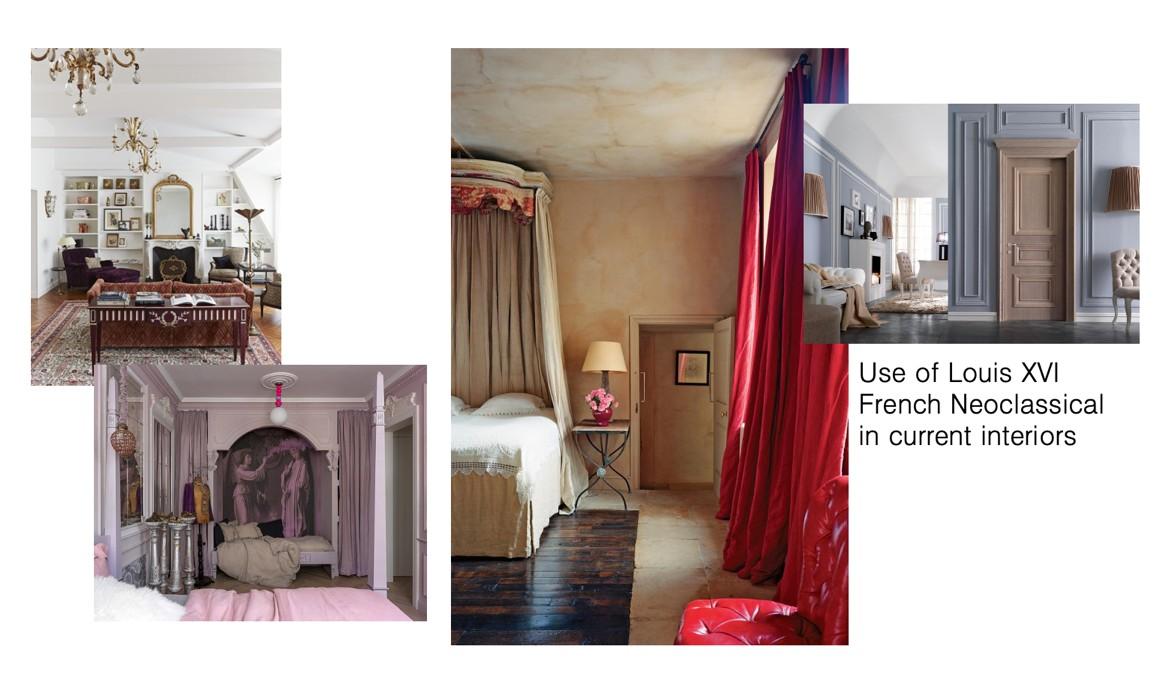

A period of time defined by the declared emperor Napoleon and his regime over France. Following the French Revolution there was political conflict and disorder and after the abolishment of the monarchy there was space for new authority - Napoleon Bonaparte seized this opportunity to rise through the ranks. During what was known as the Consular period in 1799 the directory was deposed and substituted with three Consuls, including napoleon. He was named First Consul and then First Consul for Life on 1802. Napoleon eventually was crowned emperor in 1804. Napoleon achieved this accumulative power through his political and military accomplishments including revolutionary military organisation and training that assisted in France dominating European global affairs. Napoleon built a prevailing empire that ruled over most of Europe and won a succession of ‘Napoleonic’ wars during this time. He centralised and strengthened the French government after the disastrous outcome after the French Revolution, as well as founding educational structures and reinstating Roman Catholics as the countries core religion. Nevertheless, ensuing ruinous military defeats including a failed invasion of Russia, French funds were weak and the country was again in a dire situation. In 1814 Napoleon went into exile on the island of Elba, and then returned to power in 1815. This resulted in many European countries declaring war against France and Napoleon's second reign as emperor collapsed after the Battle of Waterloo in June 1815. Napoleon was then exiled to Saint Helena where he stayed until his death in 1821.
• Napoleon

• Josephine de Beauharnais
• Charles Percier
• Peter Francois Leonard Fontaine
• Jean Chalgrin
Thought of as the initial ‘interior designers’ Percier and Fontaine exclusively worked for Napoleon using their designs to legitimise and celebrate the emperor and his achievements. In opposition to designers that came before, Percier and Fontaine would control all elements of a project including the architecture, interior and décor accessories, making sure there was congruence and harmony between them.

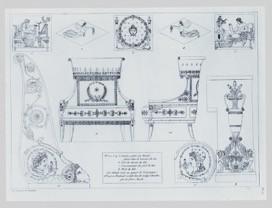
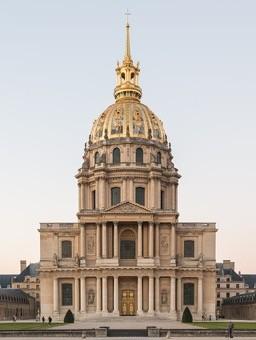

Fontaine and Percier studied classical architecture at Academe de Beaux Arts before moving to Rome where they would be stirred and influenced by classical themes. Their signature style became representative of Empire style – a application on blending extravagance with restriction and military heroism. Napoleon commissioned Percier and Fontaine to redesign and refurbish many buildings including Fontainebleau, Chateau de Malmaison, Hotel des Invalides and most famously build the Arc de Triomphe du Carrousel in Paris. This was motivated by the Arch of Septimius Severus in Rome and themes of bravery, command and rigor would continually appear within their designs.
Fontainebleau was designed to highlight Pompeiian red walls and black and gold furniture which were Napoleon's favourite colours. Chateau de Malmaison was a home for Napoleon's wife Josephine, and Percier and Fontaine were brought on to design a space that was dedicated to Napoleon's status, his character and heroic role as emperor. A constant reminder to Josephine the power and prominence her husband possessed. Each room had touch of this egotism, for example the bedroom with fabric loosely adorning the bed like a tent, a reminder of Napoleon’s time at war and the tent he would have stayed in during these battles. Truly propagandistic and an idealisation of Napoleon, even with gold ‘N’ letters featuring throughout interiors and motifs that included laurel wreaths, rosettes, eagles and bees which were Napoleon's chosen symbol.
Charles Percier & Pierre Francois Leonard FontainePercier and Fontaine designed every detail of an interior including the furniture, such as the state beds, side tables, wall lights, furnishing hardware and sculptures. Their influential and admired designs were published and became known worldwide, furthering significance and popularity in Empire style. They created military stimulated interiors with references to Greek, Roman and Egyptian themes and brought these classical references into a modern expression. Victorious schemes revolved around classical references meaning there was formality and an imposing character to each space reflective of Napoleon’s supremacy and prestige.
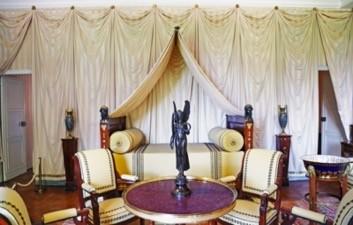

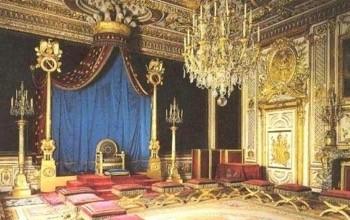
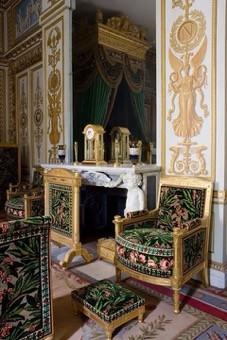
 Chateau de Malmaison
Chateau de Malmaison
Empire style architecture was radical and innovative as straightforward timber frames began to be used for box shaped constructions. The exteriors demonstrated similar themes to Neoclassical with central domes, pediment facades, use of marble and carved symbols inspired from Greek and Roman empires. Furnishings, however, were far more logical, rectilinear and strict then previous styles, with classical ornamentation, high levels of craftmanship with the use of veneer and ormolu. Mahogany continued to be a widespread choice of wood and was utilised with gilded bronze and gold embellishments. Napoleon exerted his control in many ways not just over politics, such as commanding prerequisites and guidelines over craftsman. Another way of wielding his power and status, whilst insuring designs paid tribute to him, his role as emperor and his successes at war.
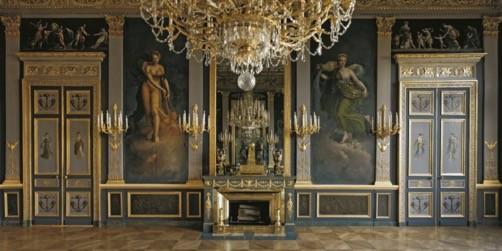
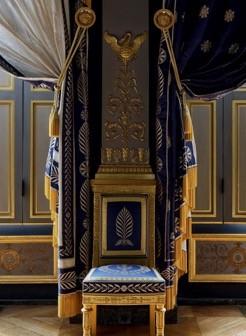
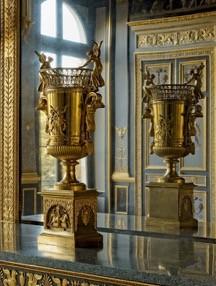


Furniture – Plain furniture. Square back sofas and chairs. Tapered or sabre or scroll legs. Chaise lounge. State beds, boat beds and sleigh beds. Small side tables with 3 legs. Large gold mirrors to make rooms appear bigger. Ormolu, gilded gold and bronze embellishment. Mahogany, cherry, walnut wood.
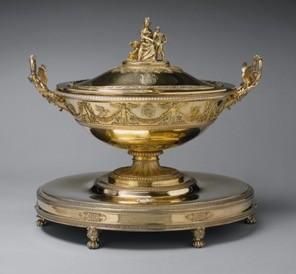
Motifs – Laurel wreaths, rosettes, leaves, bee, eagle, gold ‘N’, Greek, Roman and Egyptian influences, sphinxes, winged lions etc.
Floors – White and black tiled floors. Marble painted floors. Wood parquet and large Aubusson carpets.
Lighting – Walls cones and candelabras, chandeliers and oil lamps.
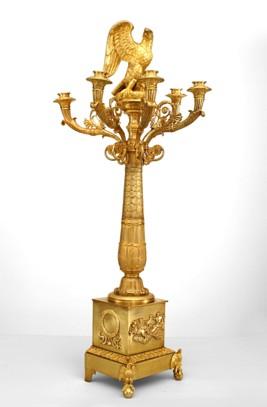
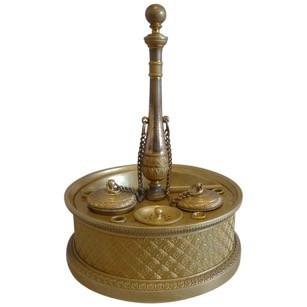
Walls – Arched ceilings. Wallpaper and trim around architectural moldings. Decorative moldings and plasterwork with a gilded finish. Frieze around room walls. Plain ceilings.
Doors – Columns, pediments and arches. Framed and bordered in patterns.
Windows – Framed and bordered in patterns. Long casement.
Fabrics – Loosely draped around beds and along walls to be reminiscent of a tent. Satin, silk and velvet to cover walls and window treatments. Pelmets on beds. Muslin, serge, merino wool and damasks
Classic furniture and décor pieces included the carved giltwood armchair, commissioned for Napoleon's throne room (bottom left). The small round table with three legs (top right). The sleigh bed with ormolu decoration and fabric that would most commonly have also been featured on the window treatments of the same room (above left). The bronze candelabra with a classic eagle symbol and the inkwell (previous page).
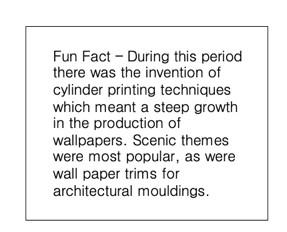
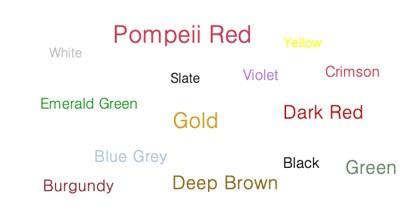
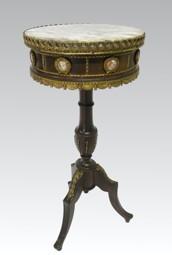
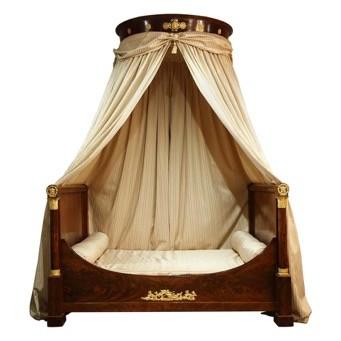

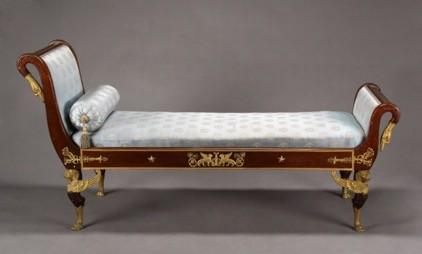
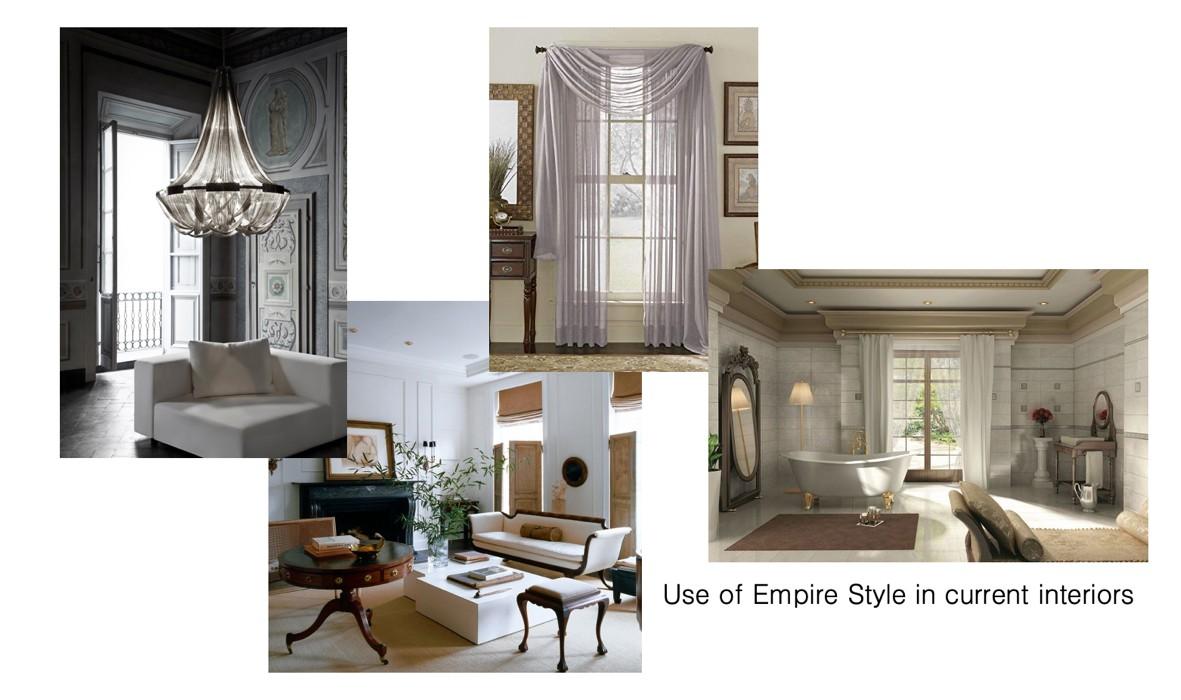
Websites pinterest.co.uk houzz.com vogue.com.au architecturaldigest.com cooperhewitt.org wsj.com wikiwand.com metmuseum.org frenchstyleauthority.com 1stdibs.co.uk bestdesignideas.com magnoliabox.com architecturaldigest.com magazineantidote.com en.chateauversailles.fr interiordesign.net vam.ac.uk Livingnewdeal.org Theartstory.org impressiveinteriordesign.com visual-arts-cork.com Britannica.com bbc.co.uk
House and Garden
The Telegraph
Architectural Digest Elle Decoration Living Etc. Wallpaper Country Living Elle Decoration Country
Blomquist, H. (2016) InTheMood ForColour Fu, A. (2014) AndreFu Maynes, T. (2015) TheMaker Museums